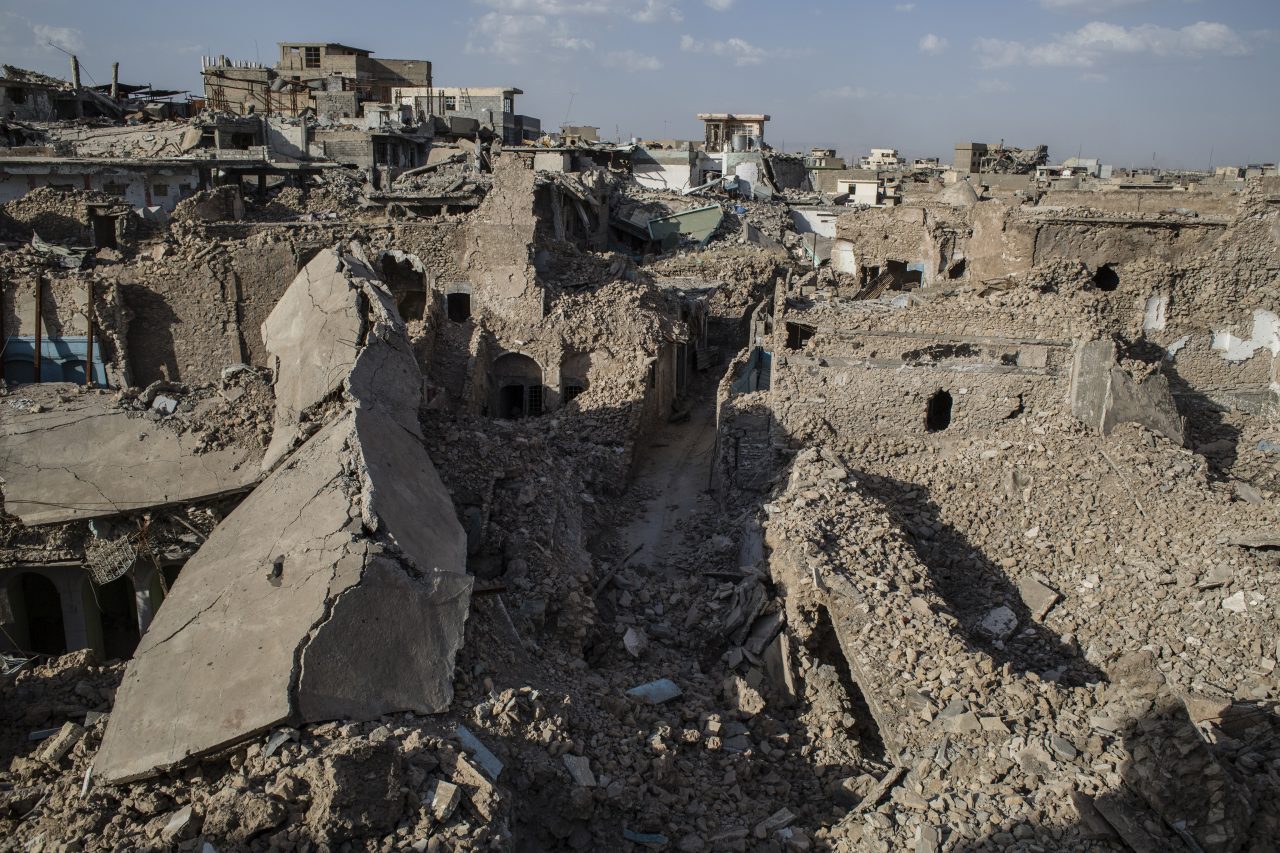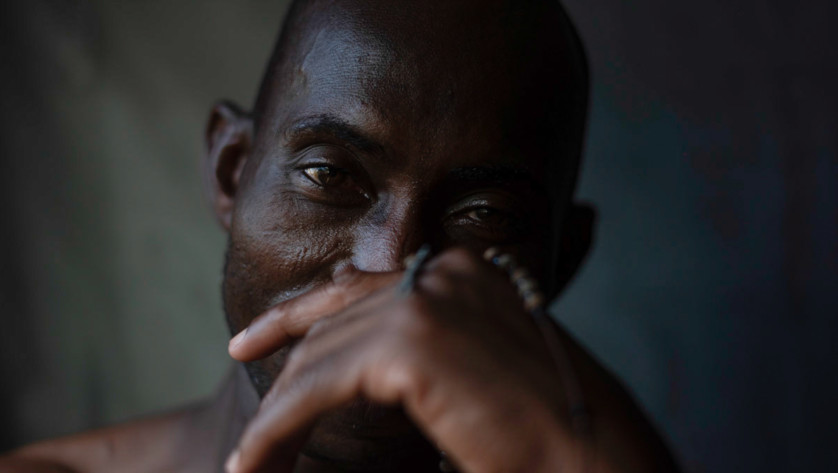‘The children have seen it’
We use a similar, locally adapted assessment tool at ICRC-supported physical rehabilitation centers in Erbil among patients wounded during the fighting, injured due to other violence, or disabled for other reasons.
We measured depression, anxiety and stress and discovered that among a random sample of 30 patients, almost half showed severe and extremely severe signs of depression and anxiety, and half severe signs of stress.
Some patients also revealed signs that might put them at risk of suicide. Unfortunately, at this center, like all the centers we visited, there were no professionals available to provide support dealing with these symptoms.
One of those patients, eight-year-old Malak (“Angel” in Arabic), reached for my candy bars with eyes full of determination. She wanted to learn how to put on her new orthopedic leg by herself and walk without the help of her dad.
Malak used to be very energetic and full of life, her father tells me. After the injury in Mosul, however, Malak lost half her weight because of lack of appetite due to her emotional suffering. She constantly clung to her father as a reaction to her constant fear and was often withdrawn and quiet.
This young girl also lost her brother, her house, her friends, moved to another town, and is no longer able to go to school. Other children would pick on her, and adults would make unfair assumptions, because she looks different, says her father. “People would think that she is not smart enough and not a lot of people try to talk to her. They don’t see her a complete person,” he said.
Cities of the missing
The people of Iraq also bear another heavy emotional burden: the hundreds of thousands of people who have disappeared over the years during the various international armed conflicts and internal turmoil that have affected the country since 1980. All told, the number of people who have gone missing in Iraq is comparable to the population of a small city.
Estimates are that hundreds of thousands of people are still today unaccounted for. Each one of those disappearances, leaves a mark on friends and family. Some estimates suggest that as many as five million people have been affected by the disappearance of a loved one.
One of those five million is Nidal, (“Struggle” in Arabic), a 50-year-old painter who learned to live without all seven of her family members who have gone missing during the era of the former regime. “They exterminated my whole family and took all our lands and houses,” she tells me.
With eyes full of terror, a wavering voice and a trembling body, she recalls every detail of that day in which she saw her parents and her brothers being taken away. Nidal looked for them in mass graves, morgues, and in pictures of missing people for years and years (at that time there were civil society organizations taking pictures of bodies found in mass graves and displaying them on the walls of the mosques so families could recognize their loved ones).
“I died two times,” she says, ”the first time when they were taken away, and the second time when they did not show up after the fall of the former regime”.
Nidal frequently wakes up with nightmares, she doesn’t eat for long periods of time and is addicted to pain killers. The uncertainty haunts her. Deep in her mind, she holds on to hope, because “maybe they are detained in a secret prison? What that would make of me if I stopped hoping? A traitor.”
Nidal is living with something that psychologists call “ambiguous loss” — which is a normal reaction to abnormal situations and is linked to the uncertainty associated with not knowing the whereabouts of loved ones. This is generally extremely distressing for individuals and families; the fact that no remains have been recovered means that the missing person might still be alive and the family cannot hold a burial ceremony and move forward in the grieving process.
One of the most touching story I heard came from a father whose son, Sami, went missing two years ago while on this way to Erbil to book a surgery procedure for his father.
The father was certain that his son was still alive. It was the core of his discourse all through the conversation. But at one point he turned to his youngest 10-year-old son Shadi, who was present during the whole interview and said:
“I don’t talk to my young one about the disappearance of his brother, because if Sami has died, I want Shadi to forget him, and if by any chance Sami is still alive I would be happy to see Shadi positively surprised up on the return of his brother.”
The challenge
How is it possible to capture the nature of such suffering, to measure its effects and construct a response that matches the depth and scale of the suffering? With an extremely underdeveloped mental health and psychosocial support services and no referral pathway in the country, some health care staff, patients, displaced people and families of missing persons might even develop life-threatening psychological disorders.
If we don’t take care of these people’s wellbeing, might they become further casualties? With no army of psychologists to come to the rescue, it’s up to us to slowly build solutions on the ground, among people who understand the local culture, language and suffering.
Fortunately, the humanitarian sector is increasingly aware that psychological support and mental health services should become a more integral part of its response to crisis. So in many parts of Iraq, other organizations are doing what they can. For our part, the ICRC approach relies on strengthening local organizations supporting families of missing persons, and building the capacity of local health care providers.
The collective effort is not nearly enough to meet the enormous needs, but it’s a long overdue start toward rebuilding the inner landscape of people coming to terms with unimaginable suffering.
 Red Cross Red Crescent magazine
Red Cross Red Crescent magazine 






 Tech & Innovation
Tech & Innovation Climate Change
Climate Change Volunteers
Volunteers Health
Health Migration
Migration